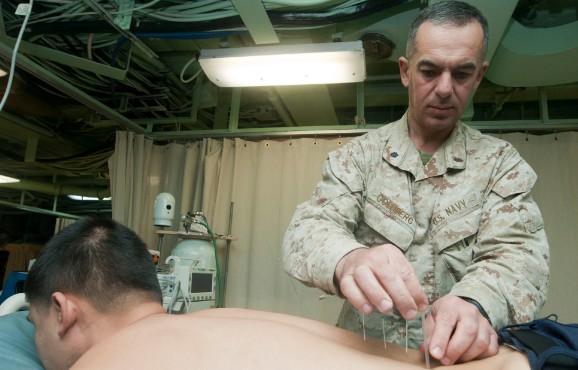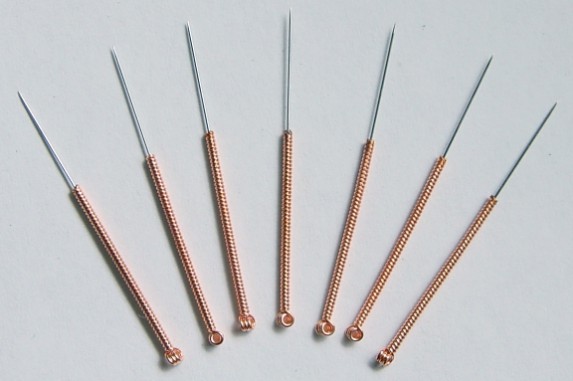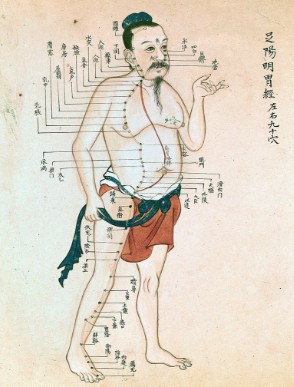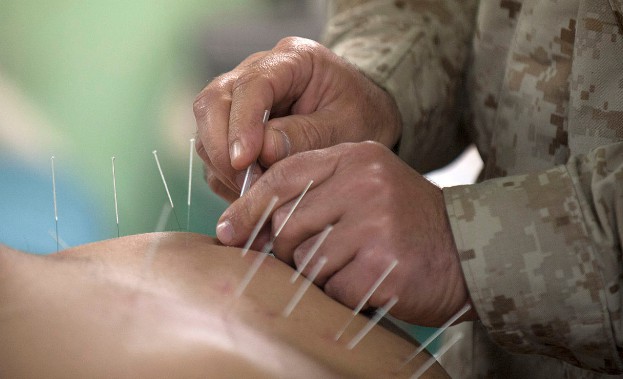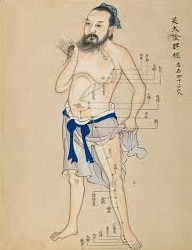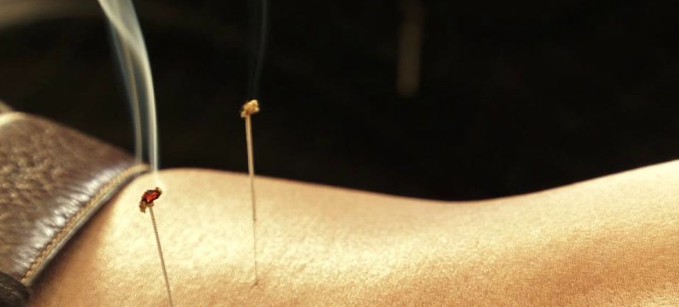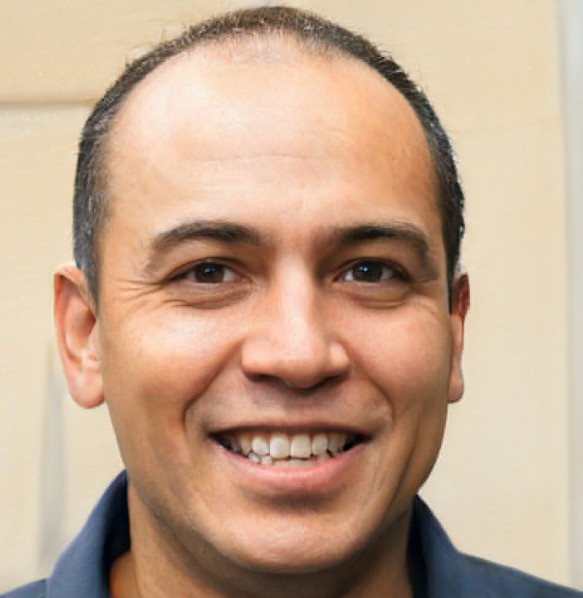Close to eighty percent of people are going to suffer from low back pain at some point in their life. In fact, one of the main reasons people seek medical help is back pain. For people who seek acupuncture it is the number one reason. However, there is good news. Research suggests that chronic low back pain can be effectively treated with the use of acupuncture.
It is widely understood that acupuncture is a non traditional (not part of the traditional western medicine) alternative treatment for both neck and back pain. Granted, acupuncture is not often the first choice of treatment for people suffering from neck and pain, however more and more patients, as well as medical professionals are beginning to use acupuncture as a means of reducing such pain.
In a review of 22 acupuncture studies we found that short term relief for chronic pain was achieved with acupuncture. In addition, in comparison with people who received a scam treatment, it showed more improvement for decreasing pain. However, other studies showed that scam acupuncture could prove to be as effective. These studies also observed that both sham and actual acupuncture were more effective than standard treatment.
The NCCIH (National Center for Complementary and Integrative Health) showed that a number of studies indicated acupuncture may have the ability to ease chronic low back pain, osteoarthritis/knee pain and neck pain. In addition, the frequency of tension headaches and prevention of migraines may be helped.
Guidelines from both the American Pain Society and the American College of Physicians noted that doctors should give consideration to acupuncture as an alternative therapy for people who suffer from chronic low back pain which does not respond to conventional treatment.
What Exactly is Acupuncture?
This treatment involves the stimulation of specific acupuncture points on the skin with the use of thin needles. There can be an association with pressure, laser lights and heat being used at these points. Acupuncture comes under Chinese medicine and is based on the theory that energy always travels in our body, in a healthy body the energy is perfectly balanced. When the levels of energy decrease we encounter an illness.
In the theory of acupuncture there are more than 2,000 points on the body which connect to 20 meridians (pathways). It is these pathways which conduct the qi in the body. Hair thin needles are inserted at certain combinations of these 2,000 points with the goal of correcting and then maintaining the normal flow of qi. Acupuncture falls under holistic treatment, focusing on the idea that local pain can be healed through overall body health.
Other noninvasive treatments like pain medication, heat therapy and physical therapy can be used along with acupuncture. However, if after several weeks of months you are still in pain, you may need to consider a more aggressive approach.
What are the Benefits of Acupuncture?
The benefits which may be received through the use of acupuncture for low back pain are:
- Better circulation
- Lower stress levels
- Better immune system
- Relief from pain
- Improved energy and vitality.
How Acupuncture Appears to Help Back Pain?
Over 2,500 years ago acupuncture began in China. Thin needles were inserted at certain points on the skin. Chinese medicine says that there are over 2,000 points on the body. Each point is connected by meridians which cause energy to flow. The energy is called Qi (said like ‘chee’). When these points are stimulated the imbalance of Qi can potentially be corrected and hence the flow of energy can be improved. Practitioners feels that this can improve overall health as well as provide pain relief.
Although the way acupuncture works is not solidly proven, there are a number of effects on the body which are commonly accepted. One of the most notable is the stimulation of the central nervous system (the spinal chord and the brain). Many people say they feel a tingly feeling, a sense of relaxation or energy. To a large extent this is defendant on the person who is having the acupuncture and their perception of it.
In the course of one treatment between 1 and 20 FDA approved needles are used, some may just break the skin surface while other needles used can be up to a few inches in length. Longer needles, such as those which are from 5 to 9 inches, are used for deep fat and muscle and much depend on the necessary penetration for the treatment. Needles tend to be left in for 15 to 30 minutes. Sometimes the needles are turned a particular way, depending on the intention of the practitioner, they may then be left in for only 10 seconds and removed, then the same needle is used on the patient at other points. Sometimes needles are electrically charged or heated after they have been inserted. This form of electrical acupuncture can be used with a non-penetrating probe or with needles.
People very rarely would say that acupuncture id painful, although they do describe it in a variety of different ways depending on the person. Needles used in acupuncture come to a smooth point, not a sharp edge like standard needles used for injections. They are also very thin, in fact they are about 20 times thinner than a standard injection needle. In addition, neeles used are safe in the way that they do not remove tissue the way that a standard needle would do. Moxibustion, a herb compound, is also used by some practitioners, it is burned on the needle during insertion.
Theories for How Acupuncture is Effective:
The release of opioid peptides. These are chemicals which occur naturally in the brain and which are analgesic. Opioids are important for the reduction and easing of pain. Evidence shows that acupuncture causes these chemicals to be released since it stimulates the central nervous system.
A change in the release of neurotransmitters and neurohormones. It is said that the hypothalamus and pituitary gland are activated during acupuncture and hence change the secretion of neurotransmitters and neurohormones. They are directly related to the sensation of pain as well as organ activity. Evidence points to acupuncture changing this secretion, in this way it acts as a form of pain relief to a certain level. In addition, documentation shows acupuncture to have a positive effect on immune functions within the body.
Electromagnetic points are stimulated.Theory says that the 2,000 points used during acupuncture are conductors of electromagnetic signals. It is thought that, when stimulated, they cause endorphins (a natural painkiller found in the body) to flow.
Certainly, many medical professionals see acupuncture as an effective treatment for specific conditions, however a wide consensus on the matter still does not exist. Some will explain the benefits of acupuncture in terms of Chinese theories, including meridians and Qi. Others put the emphasis on biological and scientific changes, such as those which we outlined above. Still others doubt whether acupuncture has any positive impact. Such skeptics certainly should try the treatment first before deciding for themselves what their opinion is.
Acupuncture Risks and Side Effects
The popularity for procedures such as acupuncture for back pain is growing. A number of studies have been done that helped validate the efficacy of this procedure. In the US, acupuncture is still under some scrutiny and medical professionals are uncertain of its validity.
Similar to other procedures, acupuncture does have some cost and some risk. When a trained and experienced acupuncturist carries out the procedure it is reasonably safe. It is very rare to have the organs punctured or to develop any type of infections after having this procedure. Fortunately, those who have acupuncture experience far fewer adverse side effects than those who have other types of treatment for back pain.
Those who are intoxicated with alcohol or drugs should not have acupuncture. If you have a pacemaker or you have seizures then it’s also generally recommended that you don’t have acupuncture. Anyone who has hemophilia or takes blood thinners should be very cautious if having this procedure done. Others who have infections or certain types of disease or skin disorders are also in the category of those that should not have this procedure done.
Any woman who is pregnant should not allow acupuncture procedures to be done in the abdominal area. Some types of acupuncture could stimulate early delivery and this should definitely be avoided. Not all of the areas of concern are located in the lumbosacral or abdominal area. If pregnant, make sure you work with a practitioner who understands what is safe and what areas should not have the procedure done on.
As with any medical treatment, it is recommended that before you begin this type of procedure that you consult with a doctor or healthcare professional. This procedure is by all means quite safe. The determination as to whether a patient is a good candidate for acupuncture is mostly up to the patient and the health care provider. It’s always good if the patient asks about the success rate for acupuncture and the particular condition being treated.
If you’re taking any type of medication or you have any type of existing conditions or illnesses you should let your doctor know. Anyone who has a pacemaker or any woman who is pregnant or if you have any type of implant, these are all things that your doctor or acupuncturist should be aware of. If you find that your acupuncturist is unfamiliar with a common condition that is typically treated with acupuncture, then that is a red flag and you might want to look elsewhere.
Frequently Asked Questions
Q: What Happens when a Person Receives Acupuncture?
Similar to a doctor that sees you for the first time, an acupuncturist will ask about the history of your health on your first visit. They will then check your pulse and look at the color and shape of your tongue and they may perform other types of physical examinations. Once the acupuncturist is finished with the examination they can then proceed to recommend a plan of treatment for the particular condition you want acupuncture for. You will lay on a table to begin treatment where acupoints will be used to stimulate areas of your body. The average person doesn’t feel any type of discomfort and once the needles are placed they are usually allowed to remain between 15 and 30 minutes. Many people feel relaxed during the treatment.
Q: How Can I Choose a Good Acupuncturist?
If you have a reputable healthcare practitioner you know, then they can give you a referral. Any doctor who understands even a little about acupuncture may know a licensed acupuncturist they are willing to recommend. You can always go online and see what others are saying about the practitioner that you are considering going to. In America, it is becoming more commonplace for professional healthcare practitioners such as doctors, Chiropractic doctors, physical therapist and others to become licensed as an acupuncturist. In some areas, even nurses become licensed acupuncturist. Each state has their own set of requirements for becoming licensed.
Q: Who Actually Performs the Treatment?
It should always be a licensed practitioner that carries out the treatment. It’s best to do the basic research to make sure how they rate and check that their credentials are real. This can be done by calling the National Certification Commission on Oriental Medicine at 904-598-1005.
Q: What is The Cost?
Obviously, it will range depending on location and other factors but typically $45 to $125 is per session is normal. Usually, this procedure is not covered by medical insurance but there are rare cases where it is. You can ask the practitioner if their procedures might be covered under your insurance policy.
